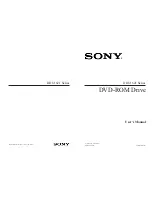
ECO REFERENCE MANUAL
12-1
EMC
12.
EMC GUIDELINES
All electronic and electrical equipment generate
unwanted signals. These signals can be emitted
from the product either via cables that are
connected to the product (Input, output, control
signals etc.) or via electromagnetic radiation ‘radio
transmission’. These signals can be received by
other products (via the same routes) and can
interfere with the correct operation of the product.
Micromaster
Control
Output
Supply
Emissions
Micromaster
Control
Output
Supply
Immunity to
Emissions
Any particular product gives out a certain level of
emissions, and has a certain level of immunity to
incoming signals from other products. If the
immunity of all products is higher than their
emissions, there is no problem. If the immunity
is lower, severe problems can occur, causing
quality problems, damage, or in extreme cases
injury.
Electro-magnetic Compatibility (EMC)
concerns how equipment works together;
Electro-magnetic Interference (EMI) refers to
the unwanted signals themselves.
EMI has become a more serious problem
recently as more electronic systems (which
may prove to have low immunity) are used in
industrial applications, and as power electronic
products such as drives, generate high
frequency signals which can produce high
levels of interference.
ELECTRO-MAGNETIC
COMPATIBILITY (EMC)
All manufacturers/assemblers of electrical
apparatus which performs a complete intrinsic
function which is placed on the European
market as a single unit intended for the end
user must comply with the EMC directive
EEC/89/336 after January 1996. There are
three ways by which the
manufacturer/assembler can demonstrate
compliance:
Self-Certification
This is a manufacturer's declaration that the
European standards applicable to the electrical
environment for which the apparatus is
intended have been met. Only standards
which have been officially published in the
Official Journal of the European Community
can be cited in the manufacturer's declaration.
•
Technical Construction File
A technical construction file can be
prepared for the apparatus describing its
EMC characteristics. This file must be
approved by a ‘Competent Body’ appointed
by the appropriate European government
organisation. This approach allows the use
of standards which are still in preparation.
•
EC Type-Examination Certificate
This approach is only applicable to radio
communication transmitting apparatus.
The MICROMASTER Eco and MIDIMASTER
Eco units do not have an intrinsic function until
connected with other components (e.g. a
motor). Therefore, the basic units are not
allowed to be CE marked for compliance with
the EMC directive. However, full details are
provided of the EMC performance
characteristics of the products when they are
installed in accordance with the wiring
recommendations in the Wiring Guidelines at
the end of this section.
Summary of Contents for Micromaster Eco
Page 1: ......
Page 49: ...ECO REFERENCE MANUAL 9 8 Frame Size 8 ...
Page 50: ...ECO REFERENCE MANUAL 9 9 Frame Size 9 ...
Page 52: ...ECO REFERENCE MANUAL 9 11 Frame Size 6 Frame Size 7 ...
Page 148: ...ECO REFERENCE MANUAL 15 17 6SE3290 ODK87 OFB7 Class B EMC Input Filter ...
Page 183: ......
















































